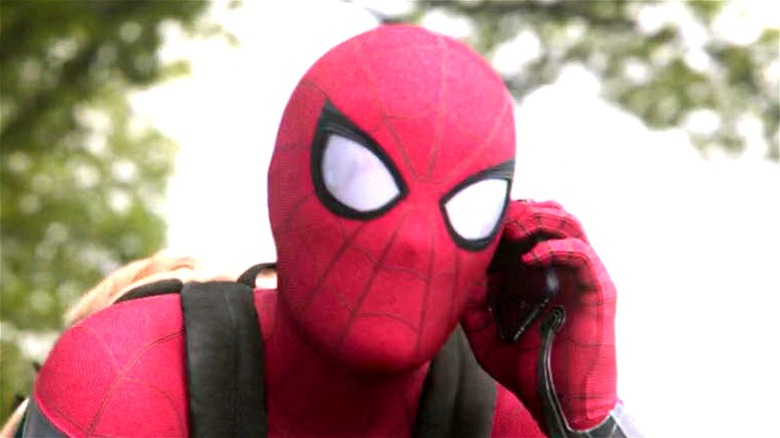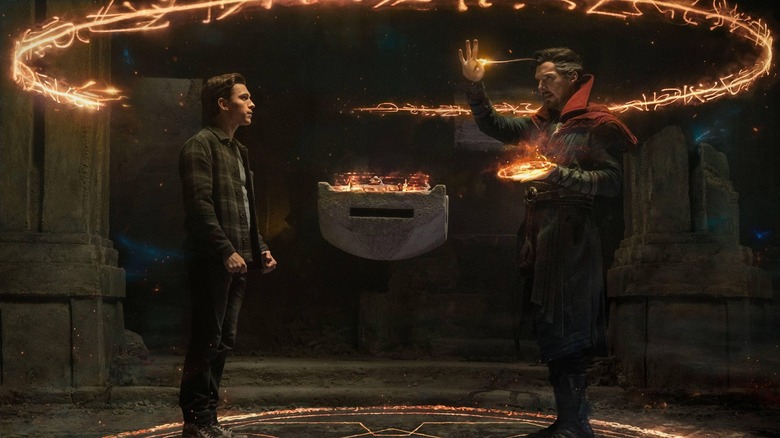The Supreme Court Case That Could Completely Change Spider-Man's Future
Marvel fans are no strangers to the intricacies of copyright laws and understanding who owns what characters. Disney may have purchased Marvel Studios to the tune of $4 billion, but that only gave the company access to certain characters (via We Got This Covered). Franchises like "Fantastic 4," "X-Men," and "Deadpool" had already been sold to 20th Century Fox, but when Disney purchased Fox in 2019, those series reverted to Marvel Studios. Then there's the issue with Spider-Man, who was sold to Sony in the 1990s. It all becomes confusing incredibly quickly, and based on what the Supreme Court does in the near future, it could become even more convoluted.
As reported by The Hollywood Reporter, a case related to the "Game of Life" is set to go in front of the United States Supreme Court over questions regarding the game's creation. The game was first sold in 1960 and created by toy developer Reuben Klamer and game designer Bill Markham. Decades after the fact, Markham's heirs sought to terminate the game's copyright so that the rights would fall back to the family. However, a judge at the time determined the game was made as part of a "work made for hire" agreement, meaning Milton Bradley and subsequently Hasbro were the authors of the property.
Now, Markham's heirs want to take their case to the Supreme Court so that the highest judges of the land can address who owns the rights to movies, books, characters, and paintings created under the 1909 Copyright Act. This could have serious ramifications for characters created prior to the passage of the Copyright Act of 1976, including Doctor Strange, Iron Man, and Spider-Man.
Expect more updates on this case at the beginning of 2022
For years, courts have adopted the "instance and expense test" to determine whether an individual created something for a company outright or worked as an independent contractor while assuming the bulk of the financial risk. There are two factors that go into this test. Firstly, "instance" relates to how far the hiring party went in maneuvering the creation of the creative work. Secondly, the "expense" refers to whether the company assumed financial risk or if the creator didn't receive payment unless the company ended up purchasing the work.
For years, Disney and Marvel have insisted the characters were created on a freelance basis, done at Marvel's instance and expense all of those years ago. However, that's in contrast to what many writers, artists, and their heirs insist, namely that the likes of Don Heck and Gene Colan made creative choices outside of the company's scope and assumed most of the financial risk to get their stories told.
THR reports that the Supreme Court is scheduled to confer on whether to take up the "Game of Life" case on January 7. A decision on whether to go through with the case or not should follow within a matter of days, but Public Knowledge has already submitted an amicus brief in favor of Markham and artists at large. In this brief, Meredith Rose stated, "Congress designed the termination right to be irrevocable, inalienable, and a source of much-needed equity for creators. An artist does not know how much her future work will be worth when she signs her contract ... Termination rights are supposed to allow artists to end or renegotiate these licenses and grants, and give them a second chance at controlling their creative destiny."
In the event the Supreme Court takes the case, it's expected Disney will submit an amicus brief of its own in favor of Hasbro.

